Step by step tutorial on how to make preserved lemons (aka pickled lemons) PLUS a detailed section with many ideas on preserved lemons uses.

Preserved lemons have multiple culinary uses and impart intense, bright lemony flavor.
Jump to the Recipe Card
Jump to the Recipes Using Preserved Lemons and Preserved Lemons Uses or
Keep reading for relevant information and step by step instructions for making them (about 3 mins)
What Are Preserved Lemons and What Do They Taste Like?
Preserved lemons are simply fresh fruit cured in salt and lemon juice and are part of the culinary traditions of the Northern Africa Mediterranean coast, the Middle East, India and South Asia.
They are incredible flavor bombs. In result of the curing process their characteristic tartness is significantly subdued while the lemon taste becomes pronouncedly intense. The rind loses its bitterness.
If it is your first time tasting a preserved lemon you will be impressed by the distinctive, pure lemon essence and amplified aroma. In fact, you might have trouble believing that the lemon flavor can be so potent (in the best of ways!).
In summary, as compared to fresh ones preserved lemons have a bolder lemon aroma, much lower acidity and a salty tang.
How to Make Preserved Lemons
Preserved lemons are very simple to make and require a single ingredient besides the lemons themselves.
YOU WILL NEED: as many lemons as you’d like to preserve plus a few extra for the juice and salt. Equipment wise – a sharp knife, a cutting board and wide mouth jars with air tight lids.
As a rule of thumb budget about a tablespoon of salt per lemon plus a bit extra for the bottom and top of the jar.
How Salt Preserves the Lemons
Salt inhibits the growth of food borne pathogens found on the surface of the lemons and eliminates them, hence preserving the fruit. Through osmosis salt helps draw out water from the lemon cells and simultaneously inserts salt into them. Bacteria, yeasts and molds cannot survive in the environment with reduced free water molecules.
How to Preserve Lemons with Salt
PROCESS: All you have to do is clean, cut and salt the lemons, then pack them into jars along with freshly squeezed lemon juice.
The rest amounts to patiently waiting for the curing process to take place.
There are two prevalent ways to cut the lemons – you can quarter them or slice them into circles.
For this post I used smaller, thinner skinned lemons to quarter and larger ones with thicker rinds to preserve sliced.
Below are quick step-bystep image collages for each method.
Begin by cleaning the lemons – simply scrub the skins under running cold water. Be sure to remove any waxy coating from store bought ones (unless you have a lemon tree in your back yard you are very likely to deal with waxed fruit).
QUARTERED VERSION
Begin by cutting off the ends tips of each lemon then stand them up vertically as shown below. Cut down in half almost to the bottom, then across to create quarters attached at the base. (This traditional way of cutting the lemons goes back many centuries).
Gently separate the quartered fruit and remove the seeds, then fill with salt as shown.
Once all your lemons are generously salted pack them into a jar (bottom lined with salt) as tightly as you can (#1 and #2 below). While doing so also sprinkle salt around the sides. Pressing onto the lemons will release some juice.
Finish by topping with more lemon juice to completely cover the fruit, close the jar with a lid and let sit at room temperature – cooler is better.
TIP: Regardless of how you cut the lemons it is helpful to gently shake the sealed jar every day while they are pickling to redistribute the salt. If the lemon juice level drops to where it does not cover the lemons completely, add a bit extra juice or some filtered water.
SLICED VERSION
- Cut off and reserve the ends – to squeeze out any juice later, then slice into circles.
- Remove the seeds (helpful, so you don’t have to deal with them later #2), cover the bottom of a sterilized jar with salt (as shown below) and begin stacking lemon slices, occasionally pressing onto them to release the juice (#4, you can use a pestle or your fingers).
- Next add salt between layers and repeat the process (#1, #2 and #3 below).
- Finally, squeeze out the juice from the reserved ends and top with extra lemon juice if needed (#4 below).
TIP: If you run out of lemon juice top with filtered cold water until you have enough liquid to cover the lemons fully.
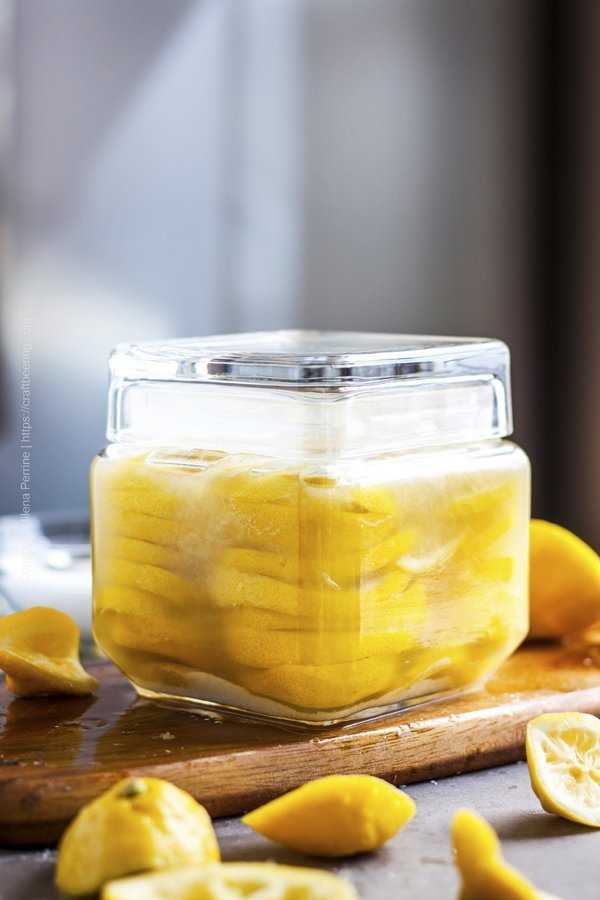
Just packed jar of sliced lemons, salt and lemon juice. Left to cure at (cooler) room temperature they will transform into pickled lemons.
Salt Preserved Lemons – What Salt to Choose?
The best type of salt to use is coarse, granular sea salt such as sel gris. Industrially produced Kosher salt is commonly used today and you will get good results with it.
Avoid iodized table salt at all cost.
Twists on Salt Preserved Lemons
Even though Chris and I are preserved lemons purists and like them for exactly how they taste we appreciate the addition of other ingredients.
From various peppercorns or juniper berries to red chili flakes and mustard seed and even hops infused salt – there are many potential ingredients that can contribute a compatible flavor to the lemons. Indian spices include turmeric and fenugreek.
Sometimes Chris adds sugar (also a great preservative) to the salt in which case the result is a more balanced residual flavor. Especially if you preserve blood oranges instead of lemons and add sugar.
You can also use limes. For example in Vietnam limes/key limes are commonly preserved, called Chanh muối. They are the main ingredient of the wildly popular salty lemonade known as nước chanh muối (with sugar and soda water added to the preserved limes). I love the flavor of salty lemonade and used to get it every time I visited Ho Chi Minh city for work. Such a treat!
How Long Do They Take?
The curing of salt preserved lemons takes between 3 to 4 weeks. Sliced ones are ready a bit earlier than the quartered ones as there is more exposed surface area in contact with the salt.
The more lemons packed in a jar, the longer the curing process will take. Over time the thick skin will start to turn translucent and the color will fade. When this happens and the rinds become soft, the preserved lemons are ready to use.
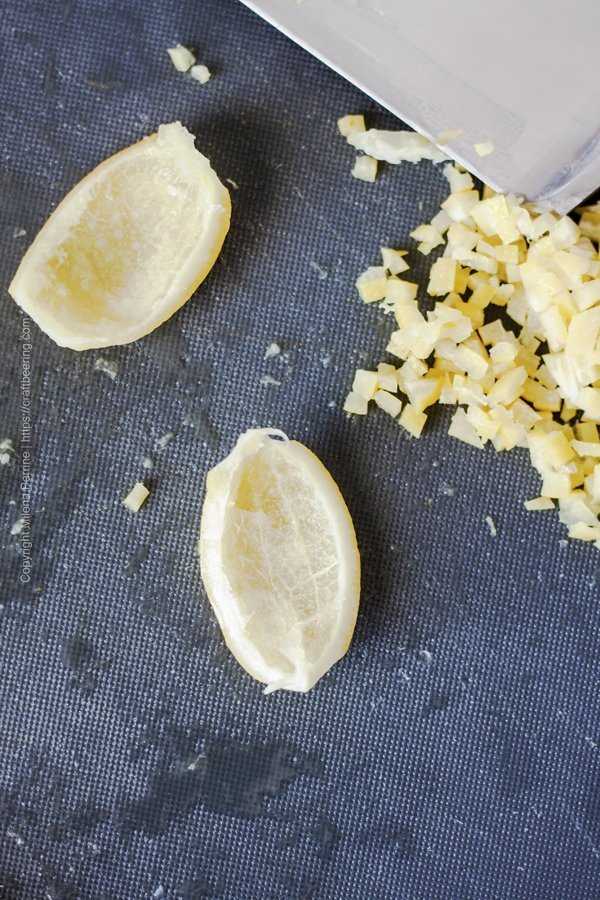
The rinds of preserved lemons are soft, translucent and have a faint yellow color.
How Long Do They Keep?
Your pickled lemons can keep for months – up to a year and even longer, especially if you refrigerate them. After all, their beginnings are in keeping fresh fruit for use after its peak season.
How to Use Preserved Lemons (Prep Steps)
After salt and time have worked their magic there are a couple of easy steps you need to complete to prepare the preserved lemons each time you want to use them in recipes. Half a lemon goes a long way!
- First rinse them thoroughly with cold water.
- Use a small spoon or a butter knife to scrape off the pulp and separate it from the rind.
- Do not feel obligated to discard the pulp – consider using it (ideas below).
That being said – the soft, very fragrant rind of the preserved lemons is where it is really at!
- You can thinly slice, dice or mince the rind and add it to hundreds and hundreds of dishes to impart lemon essence, faint acidity, saltiness and deep umami.
- Finally, the preserving liquid itself can be used – sprinkle it over fish or chicken before baking it or add it to salad dressings, fish stews etc.
Be sure to review our detailed list of recipes and ideas on How to Use Preserved Lemons as an Ingredient under the recipe card.
Preserved lemons are used as a condiment and recipe ingredient to impart fresh, potent lemon flavor with very mild acidity and salty tang. Recipe to make them at home and a comprehensive list of ideas on how to use them. *Budget about 1 tbsp of salt per small lemon (or lime). Increase accordingly for larger fruit. **If you run out of lemon juice you can add a bit of cold, filtered water to ensure the fruit is fully submerged. If not fully covered with liquid pieces of lemon can develop a coating of white mold during curing. This is harmless - simply wash it off, place the lemon back in the jar and top with more lemon juice. Once cured move the preserved lemons to the fridge, they will keep well for a year, even longer. If a recipe calls for preserved lemons you will be forgoing a lot of flavor by using a fresh lemon instead. It is a good idea to always have at least a small jar of preserved lemons in your fridge:) 
Preserved Lemons - Uses, Recipes Using Them & How to Make Them
Ingredients
Instructions
Notes
Nutrition Information:
Yield: 1
Serving Size: 1 jar
Amount Per Serving:
Calories: 10Sodium: 500mg
Recipes Using Preserved Lemons and Preserved Lemons Uses
The dish most people associate with preserved lemons is chicken tagine. However the scope of their uses is only limited by the imagination.
Chris often says that anywhere a lemon can be used a preserved lemon could do a better job and I think that there is much truth in this assertion unless your main goal is acidity.
Besides the traditional recipes of the world cuisines in which preserved lemons play a key role, I’ve rounded up below several ideas to show you how to add their essence, unique umami and depth to dishes. A few are from my childhood, others come from restaurants Chris has worked at and others are dishes we’ve made together in the past.
Let’s start with two extremely easy recipes – one for a compound butter and one for a delicious tapenade.
Preserved Lemons Compound Butter Recipe
In a bowl place all the ingredients – a stick of room temperature butter cut in pieces, 1 tablespoon minced preserved lemon rind, 1 tablespoon of chopped fresh cilantro and red pepper flakes to taste (start with 1/2 tsp).
Mix well with a fork, transfer onto wax paper and roll into a cylinder shape, tightening by twisting the ends. Refrigerate and use as needed – cut slices of the butter and place onto baked potatoes, grilled fish or chicken breast, etc.
Preserved Lemons Tapenade Recipe
The ingredients are 2/3 cup kalamata olives (pitted and diced), 2 small shallots (diced), 2 tbsp flat leaf parsley (chopped), 2 tbsp of preserved lemon rind (diced) and about 1/4 cup extra virgin olive oil. Mix everything together and serve in any manner you would a regular tapenade.
Uses for the rind
Thinly sliced preserved lemon rind makes a very, very fragrant twist you can use with various cocktails – try it!
You can also add it to this Anchovies Pizza instead of thinly sliced lemon.
Finely diced, minced or pureed preserved lemon rind is great if you:
- Add it to home made aioli – use this recipe that takes a minute and we love to serve with Blistered Shishitos.
- Mix it with Dukkah spice and olive oil to use for bread dipping or to spread over freshly baked flat bread.
- Add it to various chutneys and relishes.
- Add it to yogurt based sauces or ricotta dip.
- Add it to hummus spreads, roasted chickpeas or into falafel mixture before you fry it.
- Add it to pan sauces to use with seafood.
- Add it to various dips or clarified butter for dipping crab/lobster meat.
- Sprinkle over salads of all varieties (from lettuce through orzo to spring peas).
- Sprinkle over grilled or roasted veggies – from asparagus and Brussels sprouts to green beans and yellow beets, etc.
- Add to all kinds of pasta or pasta sauces (couscous with preserved lemons and green olives is really good!)
- Add to grain bowls or salads – faro, quinoa, bulgur etc.
- Add to cooked legume salads – beans, lentils etc.
- Add to marinades for cheese (especially compatible with goat cheese).
TIP: As a rule of thumb, first add the minced preserved lemon and then season with salt. Chances are that you won’t need extra salt.
Uses for the Pulp
Even though the pulp of preserved lemons is customarily thrown away it can contribute flavor in a variety of ways.
Use it as is or place it in a sieve over a small bowl and force it through with the back of a spoon to obtain a paste. Taste to get a feel of exactly how salty it is and the intensity of the lemon flavor, judge accordingly and
- Mix it with horseradish for a delightful condiment for cocktail shrimp or Bloody Mary
- Blend it into dips
- Add it to seafood stews and braises
- Add it to marinades
- Add it to salad dressings
Uses for the Preserving Liquid
The preserving liquid can save for months after the lemons have been used up. It’s rich flavors can also be leveraged.
- Incorporate it into marinades
- Spoon it over fish or chicken before cooking them en papiote or baking or grilling them
- Add some to fish stews or soups
- Add some of it to the braising liquid for mussels
FINAL TIP: Preserved lemons are not just for savory recipes. Try minced lemons sprinkled over strawberry sorbet or incorporate them into various frostings.
You can also mix that salty lemonade – muddle a wedge of salted lemon with a tablespoon of sugar and fill glass with soda water.
If you’d like to remove the saltiness before you use preserved lemons with sweet recipes – rinse them in cold water then blanche for 10 seconds in boiling water.

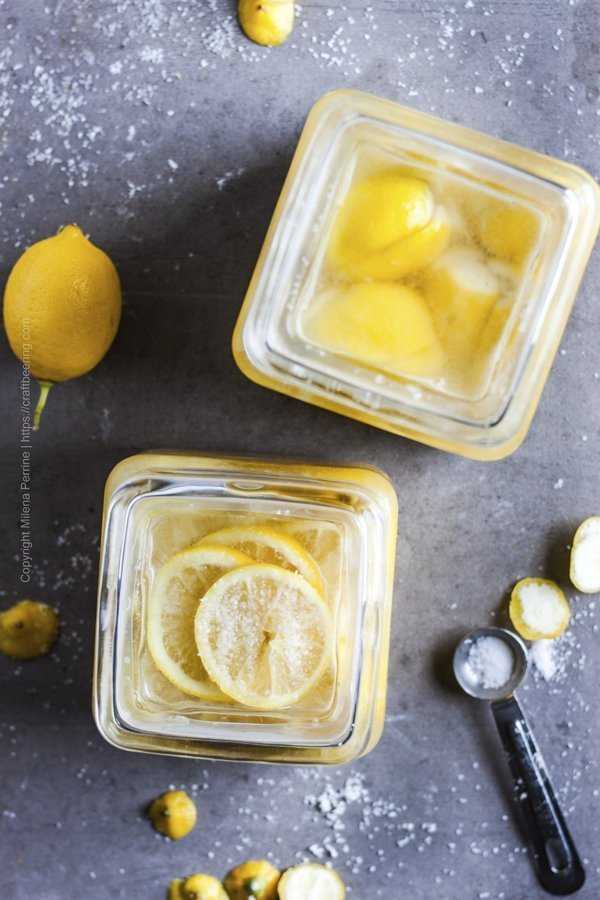
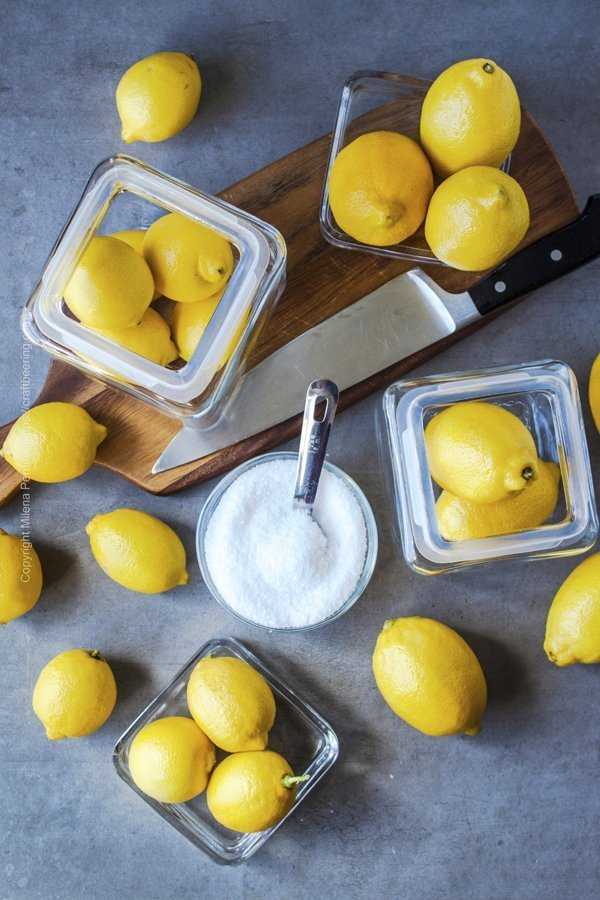
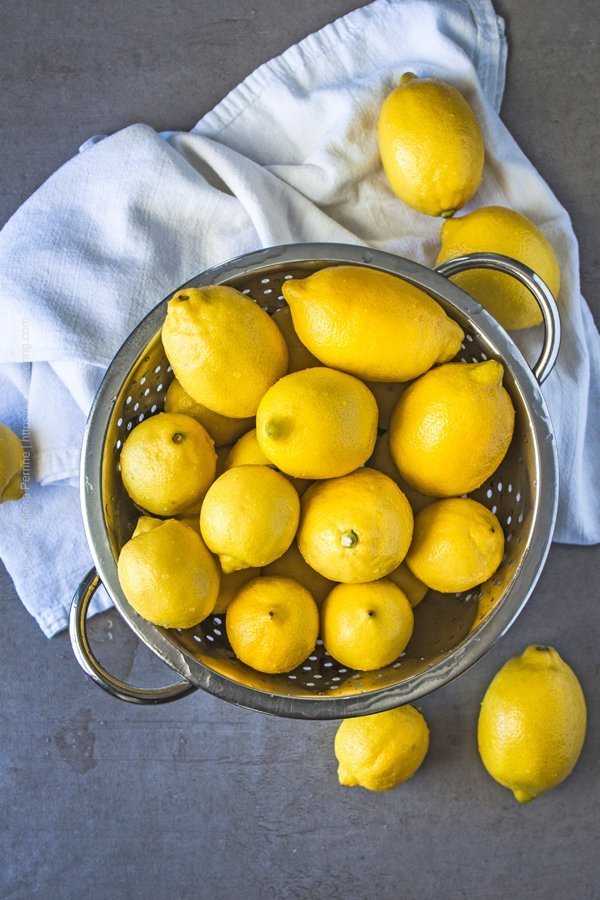
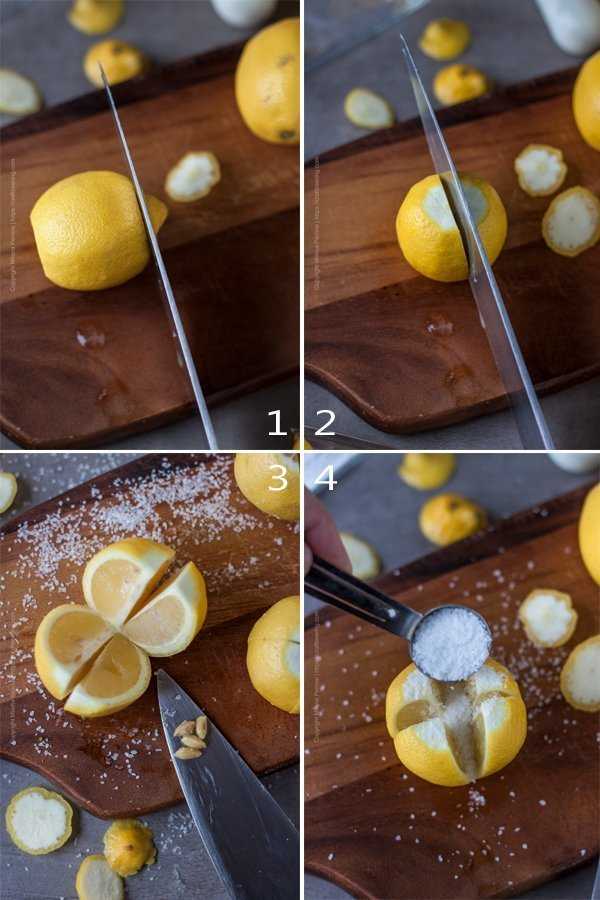
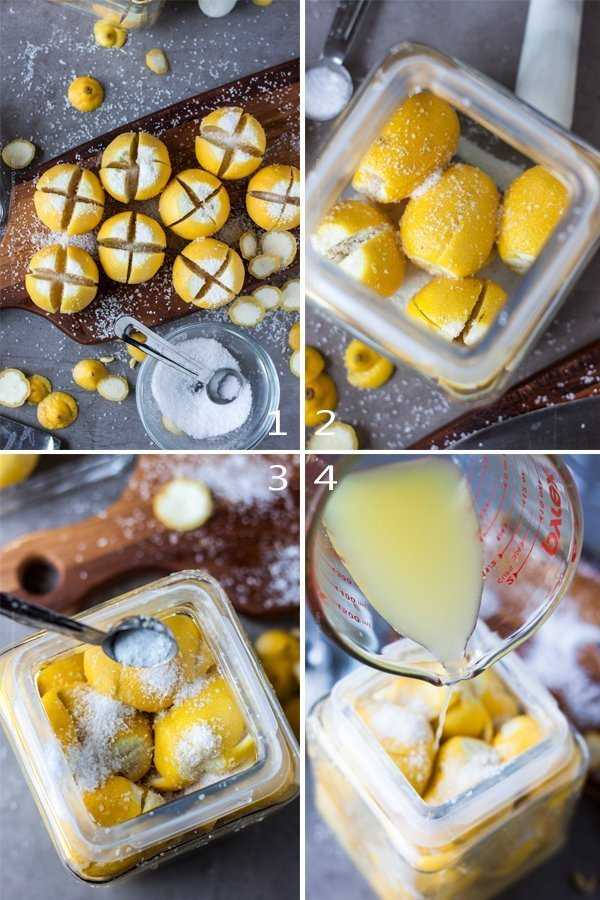
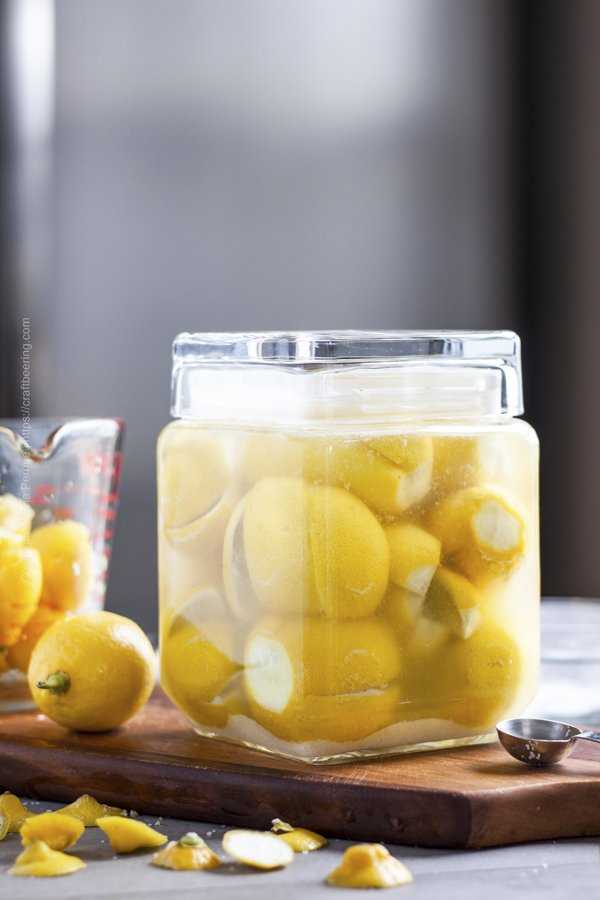
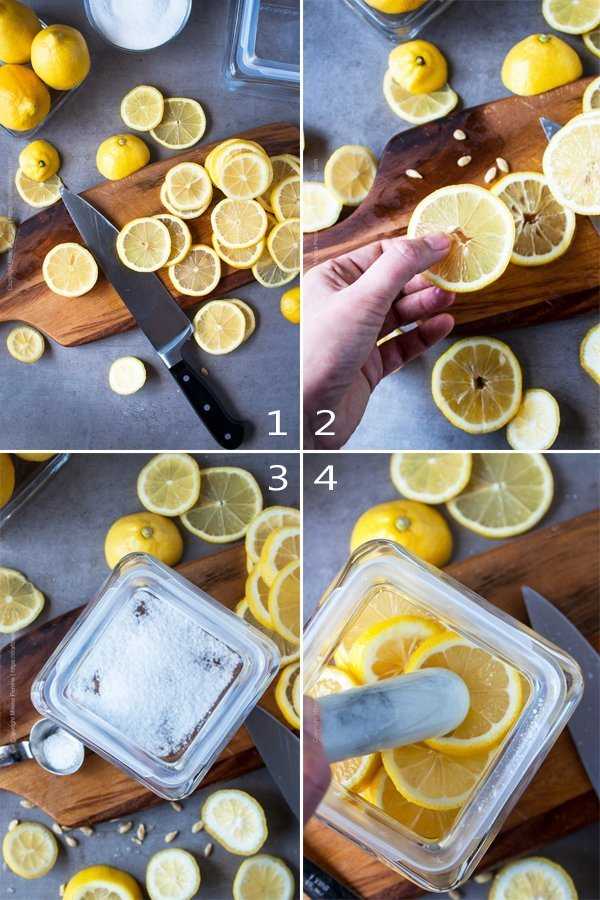
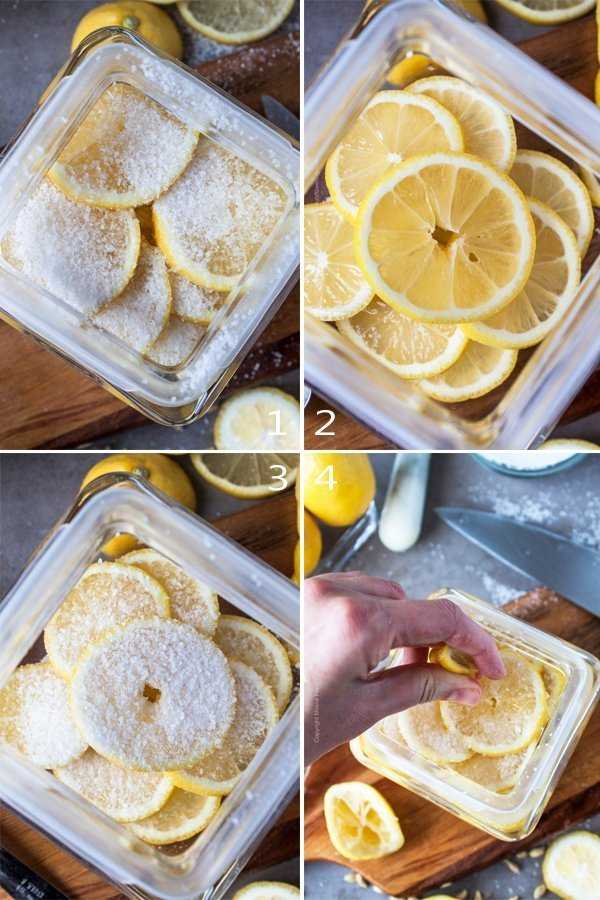
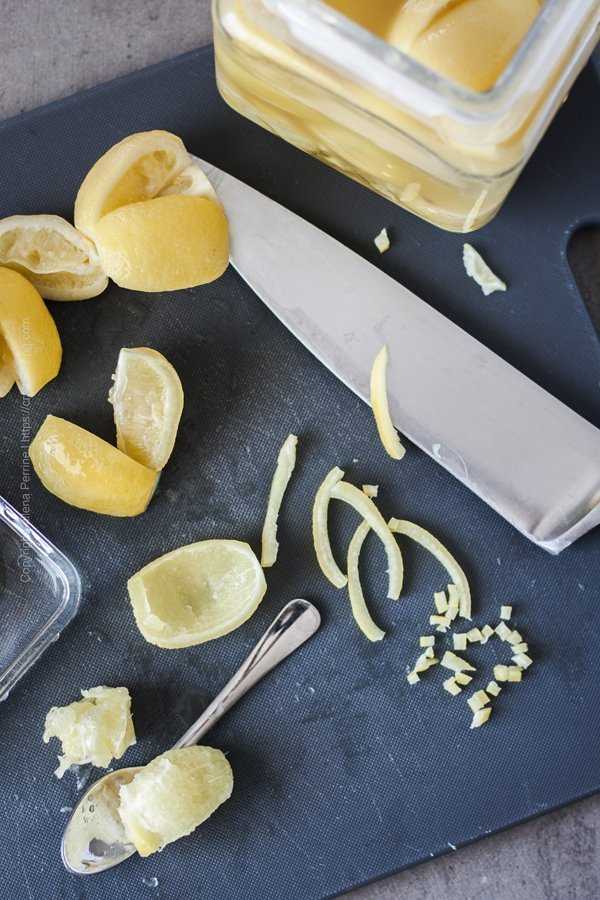
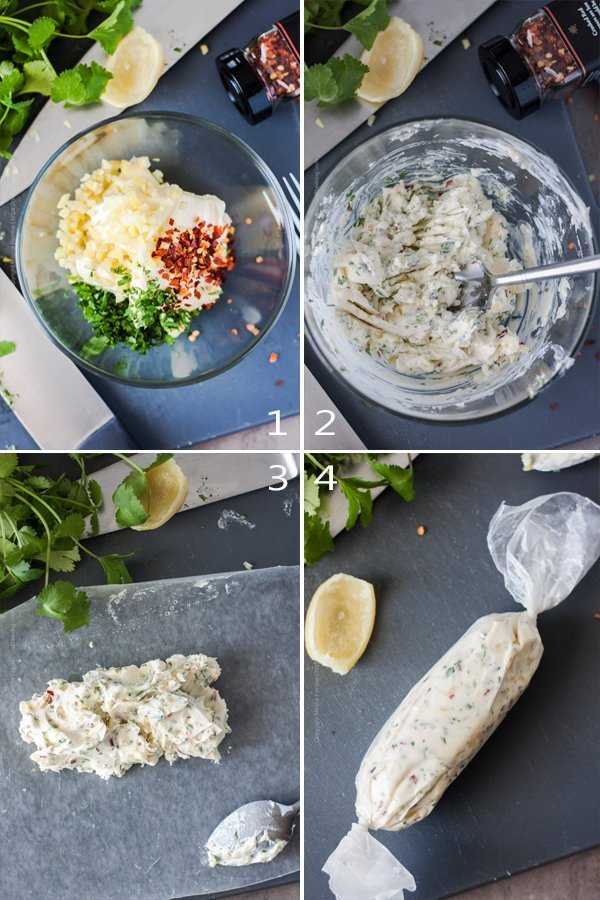
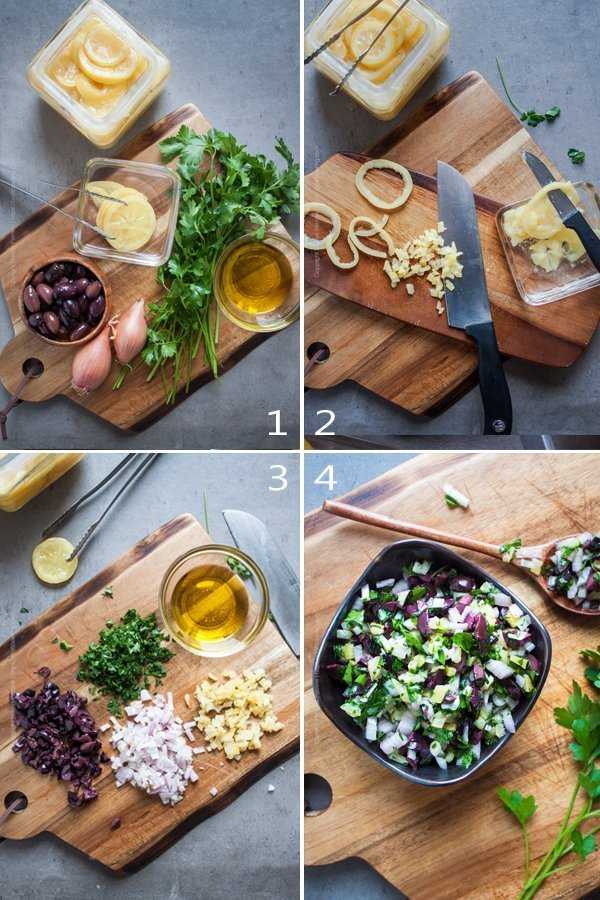
Sabi says
Hello,
So excited to try these, but I have a concern. I started my lemons 2wks ago, keep them in a cool cupboard and shake them daily. They are sliced and fully submerged.
The liquid has taken a viscous quality which I’m not sure is normal or not… Also, they don’t appear to be getting any lighter in color.
I didn’t need to add water so they are in pure fresh squeezed lemon juice.
Is the viscous liquid normal or do they need to br tossed at this point? 🙁
Milena Perrine says
Sabi, the liquid does become viscous as the water content of the lemon juice evaporates. Add a bit of filtered water and continue with the shaking occasioanlly. From what you are describing sounds like your batch is coming along nicely!
Rivki says
This is by far the best information on the topic I’ve found online. Thank you for the amazing resource! I just made my first batch with lemons from my garden (fingers crossed)!
Craft Beering says
Thank you, Rivki and hoping you enjoy your first batch!
Michelle says
Hi, great article, can’t wait to try fresh made. I have a couple jars from world market, hoping to add it to some homebrew. Would you know anything about that? Reading that the salt might kill the yeast, I’m assuming then I would have to add it after fermentation. Also wondering if I should puree it with the liquid or just slice and add the fruit or maybe just the rind? Any thoughts?
Thanks and cheers!
Michelle K
CraftBeering says
Michelle, we would rinse thorougly – the rinds only (save pulp for another use) and only use for conditioning.
MICHELLE says
Thanks, will keep you posted. Cheers!
Rosalie says
Hi,
Thanks for these comprehensive instructions!!
I tried preserving my lemons, but the top layer developed a green/grey mould. Can I still use the lemon?
Also, can you share your jar sterilizing method, please? How do you keep the plastic from deforming if heat is used?
CraftBeering says
Hi, Rosalie,
If the mold is the color you describe do not take chances and remove the top layer from the jar with the rest of the lemons. Make sure they are covered with liquid (lemon juice or lemon juice with a bit of water added and a final sprinkle of salt to onhibit any future growth. We only use glass jars and use Star San sanitizer (we have it because we homebrew and use it to sanitize all homebrewing equipment every time).
Leonie says
Hi,
I made preserved lemons about a week ago, but used normal iodised table salt.. Will it still work? Why do you advise not to use this?
Kind regards,
Leonie
teri says
Iodized salt will turn the lemons grey.
Emilie says
I’ve had some at a craft market where they were preserved, and then in olive oil. So delicious!!! When could I add olive oil in this recipe? For the sliced version…
CraftBeering says
Emilie, your experience tasting preserved lemons with olive oil sounds amazing. This is what life is all about. Follow the recipe as given (for sliced). After a week add extra virgin olive oil to the jar, just enough to top it off. Let them sit again. When ready to enjoy you may rinse the salt from the slices a bit and drizzle a bit more olive oil.
Chloeann says
Where did you get those jars!?!?!?
CraftBeering says
World Market:)
Marvellina Goh says
This is soooo well written and comprehensive! I love reading about it! I’ve never tasted preserved lemons before and now you make me all curious when I saw that “umami” word 🙂 Love all the ideas to use it in other dishes!!!!
Katherine | Love In My Oven says
Flavor bomb indeed! Your photos are so bright and beautiful!! Preserved lemons are on my foodie bucket-list. I’ve got to try your method soon!
annie@ciaochowbambina says
Flavor bomb is such an accurate description! I’ve always wanted to make these! Thanks for the tutorial!
Kelsie | the itsy-bitsy kitchen says
I’ve never made preserved lemons before and I can’t wait to try. Thank you for the inspiration!
Dawn - Girl Heart Food says
I’ve had preserved lemons on the mind for a while now and have yet to make! Love all your tips! And I really love that you can use the liquid for other uses….great way to get the most out of everything! Such a great foodie gift too! Pinned 🙂
Jennifer @ Seasons and Suppers says
I have always wanted to make preserved lemons, so I love the step by step instructions here. So useful to have around for so many dishes!
CraftBeering says
Thank you, Jennifer! Definitely worth it to have a small jar of them in the fridge at all times:)